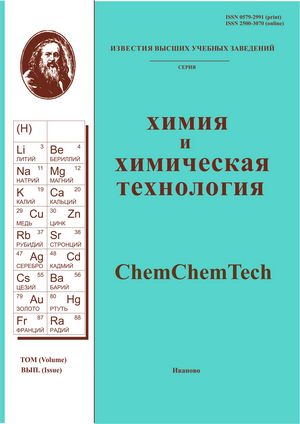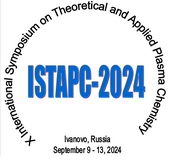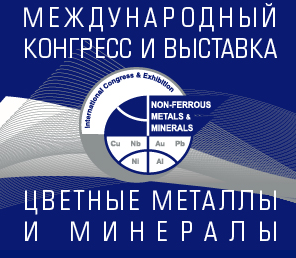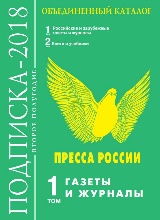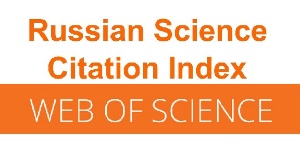ОБЪЕМНЫЕ СВОЙСТВА СМЕСИ АКРИЛОНИТРИЛ+ЭТАНОЛ В ИНТЕРВАЛЕ ТЕМПЕРАТУР (293,15-323,15) К ПРИ ВНЕШНЕМ ДАВЛЕНИИ
Аннотация
Измерены плотности бинарной смеси акрилонитрила в этаноле во всем концентрационном диапазоне и в температурном интервале 293,15-323,15 К при внешнем давлении (87,9 кПа). Плотности растворов измерены с помощью колебательно-резонансного денсиметра Anton Paar DMA 4500 с точностью измерения плотности и температуры соответственно ±5·10-5 г/см3 и ±0,03 К. Рассчитаны обьемные параметры: избыточные молярные объемы, кажущиеся молярные объемы, парциальные и парциальные избыточные молярные объемы. Избыточные молярные объемы описаны уравнением Редлиха-Кистера. Параметры уравнения Редлиха-Кистера и стандартные отклoнения избыточных молярных обьемов также рассчитаны. Величины избыточных молярных объемов отрицательны во всем концентрационном диапазоне в более низких температурах, но с ростом температуры от 293,15 К до 323,15 К отрицательные отклонения уменьшаются. Результаты интерпретируются на основе сильного взаимодействия между нитрильной группой акрилонитрила и OH-группой этанола посредством водородной связи. Однако сигмоидальная форма зависимостей избыточных молярных объемов от мольных долей этанола от положительных до отрицательных значений указывает на различные взаимодействия в зависимости от состава бинарных смесей. Более того, такая форма зависимости избыточных молярных объемов от мольной доли при низких концентрациях этанола указывает на его самоассоциирующие действия, в результате которых в этих же концентрациях преобладают гомоассоциаты акрилонитрила с диполь-дипольным взаимодействием, а также гомоассоциаты этанола с водородными связями. В работе приведены новые данные по температурной зависимости плотностей и объемных свойств бинарного раствора акрилонитрил-этанол в температурном интервале 293,15-323,15 К. Полученные результаты сопоставлены с литературными данными.
Литература
Eom Y., Kim B.C. Solubility parameter-based analysis of polyacrylonitrile solutions in N,N-dimethyl formamide and dimethyl sulfoxide. Polymer. 2014. V. 55. P. 2570-2577. DOI: 10.1016/j.polymer.2014.03.047.
Lachat V., Varshney V., Dhinojwala A., Yeganeh M.S. Molecular origin of solvent resistance of polyacrylonitrile. NMR study on the dissolved state of polyacrylonitrile in various solvents. Macromolecules. 2009. V. 42. P. 7103–7107. DOI: 10.1021/ma901336q.
Wu Q.-Y., Chen X.-N., Wan L.-S., Xu Z.-K. Interactions between polyacrylonitrile and solvents: density functional theory study and two-dimensional infrared correlation analysis. J. Phys. Chem. B. 2012. V. 116. P. 8321-8330. DOI: 10.1021/jp304167f.
Vettegren V.I., Kulik V.B., Savitskii A.V., Shcherbakov I.P., Fetisov O.I., Usov V.V. Conductivity of solutions of poly(acrylonitrile) in dimethyl sulfoxide. Techn. Phys. 2010. V. 55. P. 195-199. DOI: 10.1134/S1063784210020052.
Ghazoyan H.H., Grigoryan Z.L., Markarian S.A. Volumetric properties of binary mixtures of acrylonitrile with dimethylsulfoxide (or diethylsulfoxide) at temperatures from (298.15 to 323.15) K. Armenian Chem. J. 2017. V. 70. N 4. P. 462-476.
Kumar H., Chahal S. Studies of some thermodynamic properties of binary mixtures of acrylonitrile with aromatic ketones at T = 308.15 K. J. Sol. Chem. 2011. V. 40. P. 165-181. DOI: 10.1007/s10953-010-9645-3.
Bhandakkar V.D., Shweta R., Sangita J. Excess thermodynamic parameters of Acrylonitrile with methanol, 1,4-dioxane and cyclo-hexane at 303 K. Arch. Appl. Sci. Res. 2013. V. 5. P. 12-16.
Bhandakkar V.D., Bedare G.R., Muley V.D., Suryavanshi B.M. Molecular Interactions of Acrylonitrile and Methylmethacrylate in Methanol, Cyclohexane & P-dioxane. Adv. Appl. Sci. Res. 2011. V. 2. N 4. P. 338-347.
Tangeda S.J., Nallani S. Volume and transport properties of binary liquid systems of acrylonitrile with aromatic ketones at 308.15 K. Ind. J. Chem. Technology. 2006. V. 13. P. 71-76.
Fawcett W.R., Kloss A.A. Attenuated total reflection fourier-transform IR spectroscopic study of dimethyl sulfoxide self-association in acetonitrile solutions. J. Chem. Soc. Faraday trans. 1996. V. 92. P. 3333-3337. DOI: 10.1039/FT9969203333.
Ghazoyan H.H., Grigoryan Z.L., Gabrielyan L.S., Markarian S.A. Study of thermodynamic properties of binary mixtures of propionitrile with dimethylsulfoxide (or diethylsulfoxide) at temperatures from (298.15 to 323.15) K. J. Mol. Liq. 2019. V. 284. P. 147-156. DOI: 10.1016/j.molliq.2019.03.147.
Grigoryan Z.L., Ghazoyan H.H., Markarian S.A. Volumetric properties and viscosity of diethylsulfoxide in acetonitrile at different temperatures. Proceed. YSU. Chem. Biologic. Sci. 2017. V. 51. N 3. P. 147-155.
Hossein A. Zarei, Lavasani M.Z., Iloukhani H. Densities and volumetric properties of binary and ternary liquid mixtures of water (1) + acetonitrile (2) + dimethyl sulfoxide (3) at temperatures from (293.15 to 333.15) K and at ambient pressure (81.5 kPa). J. Chem. Eng. Data. 2008. V. 53. P. 578–585. DOI: 10.1021/je700645p.
Aralaguppi M.I., Jadar C.V., Aminabhavi T.M. Density, viscosity, refractive index, and speed of sound in binary mixtures of acrylonitrile with methanol, ethanol, propan-1-ol, butan-1-ol, pentan-1-ol, hexan-1-ol, heptan-1-ol, and butan-2-ol. J. Chem. Eng. Data. 1999. V. 44. P. 216-221. DOI: 10.1021/je9802219.
Singh D.K., Srivastava S.K., Asthana B.P. Clusters of acrylonitrile in methanol/ethanol: A structure–spectra correlation by quantum chemical and polarized Raman study. Chem. Physics. 2011. V. 380. P. 24-33. DOI: 10.1016/j.chemphys.2010.11.012.
Sinha A., Bhattacharjee A., Roy M.N. Ion-solvent interactions in acrylonitrile solutions of some tetraalkylammonium halides using FTIR spectroscopy. J. Dispersion Sci. Techn. 2009. V. 30. P. 1003-1007. DOI: 10.1080/01932690802701572.
Alia J.M., Edwards H.G.M., Kiernan B.M. Raman spectroscopic study of hydrogen bonding in benzenesulfonic acid/acrylonitrile solutions. Spectrochim. Acta. Pt. A. 2005. V. 61. P. 2939-2945. DOI: 10.1016/j.saa.2004.10.040.
Grande M.d.C., Julia J.A., Barrero C.R., Marschoff C.M., Bianchi H.L. The (water + acetonitrile) mixture revisited: A new approach for calculating partial molar volumes. J. Chem. Thermodyn. 2006. V. 38. P. 760-768. DOI: 10.1016/j.jct.2005.08.009.
Nikolova P.V., Duff S.J.B., Westh P., Haynes C.A., Kasahara Y., Nishikawa K., Koga Y. A thermodynamic study of aqueous acetonitrile: excess chemical potentials, partial molar enthalpies, entropies and volumes, and fluctuations. Can. J. Chem. 2000. V. 78. P. 1553-1560. DOI: 10.1139/cjc-78-12-1553.
Letcher T.M.L., Redhi G.G. Excess enthalpies and volumes for mixtures of (acetonitrile + a carboxylic acid) at 298.15 K. J. Chem. Eng. Data. 2000. V. 45. P. 57–60. DOI: 10.1021/je990207b.
Ciocirlan O., Iulian O. Properties of pure 1-butyl-2,3-dimethylimidazolium tetrafluoroborate ionic liquid and its binary mixtures with dimethyl sulfoxide and acetonitrile. J. Chem. Eng. Data. 2012. V. 57. P. 3142−3148. DOI: 10.1021/je3007474.
Ivanov E.V., Lebedeva E.Yu., Abrosimov V.K. Standard volumetric properties of tetra-n-ethylglycoluril (bicaret) in ordinary and heavy water at temperatures from (278.15 to 318.15) K and Ambient Pressure. J. Chem. Eng. Data. 2015. V. 60. P. 2079−2089. DOI: 10.1021/acs.jced.5b00154.
Ewing M.B., Lilley T.H., Olofsson G.M., Ratzsch M.T., Somsen G. Standard quantities in chemical thermodynamics. Fugacities, activities and equilibrium constants for pure and mixed phases (IUPAC Recommendations 1994). Pure Appl. Chem. 1994. V. 66. P. 533–552. DOI: 10.1351/pac199466030533.
Ivanov E.V. Thermodynamic interrelation between excess limiting partial molar characteristics of a liquid nonelectrolyte. J. Chem. Thermodyn. 2012. V. 47. P. 437–440. DOI: 10.1016/j.jct.2011.11.018.

